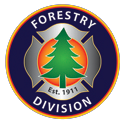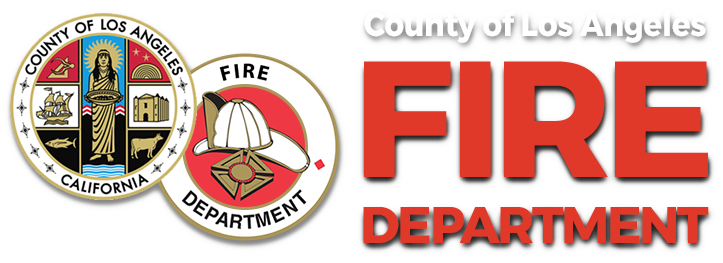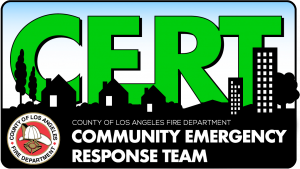
Defensible Space
Defensible Space Inspection Program
The Defensible Space Program is a joint effort between the County of Los Angeles Fire Department and the County of Los Angeles Agricultural Commissioner Weights and Measures Department, Weed Hazard and Integrated Pest Management Bureau. This unified enforcement legally declares both improved and unimproved properties a public nuisance, and where necessary, requires the clearance of hazardous vegetation.
These measures create “Defensible Space” for effective fire protection of lives, the environment, and property. The Department’s Defensible Space Unit enforces the Fire Code as it relates to brush clearance on improved parcels, coordinates inspections and compliance efforts with fire station personnel, and provides annual defensible space training to fire station personnel.
Our objective is to create the Defensible Space necessary for effective fire protection in newly constructed and/or remodeled homes within the Department’s Very High Fire Hazard Severity Zones (VHFHSZ). Fuel modification reduces the radiant and convective heat, and provides valuable defensible space for firefighters to make an effective stand against an approaching fire front. Fuel modification zones are strategically placed as a buffer to open space, or areas of natural vegetation and generally would occur surrounding the perimeter of a subdivision, commercial development, or isolated development of a single-family dwelling.
Fire Hazard Severity Zones (FHSZ)
While all of California is subject to some degree of fire hazard, there are specific features that make some areas more hazardous. The California Department of Forestry and Fire Protection (CAL FIRE) is required by law to map areas of significant fire hazards based on fuels, terrain, weather, and other relevant factors. These zones, referred to as Fire Hazard Severity Zones (FHSZ), influence how people construct buildings and protect property to reduce risk associated with wildland fires. The maps were last updated in the mid-1980s and early 1990s.
To see if a parcel is within the FHSZ, please visit the LACounty GIS Viewer
- Go to “Map Layers” on the left side of the screen and click on the down arrow for “Map Theme”
- Look and select “Hazards”
- Click on the plus symbol (+) and expand the “Hazards” menu
- Look for “Fire Hazards” and click on the Plus symbol (+) and expand the “Fire Hazards” menu
- Select “Fire Hazard Severity Zones” and the FHSZs will appear on the map
- If you would like to see the FRA, SRA and LRA, select “Fire Hazard Responsibility Areas”
CAL FIRE RELEASES 2025 LOCAL RESPONSIBILITY AREA FIRE HAZARD SEVERITY ZONE MAPS
Beginning in February 2025, the California Department of Forestry and Fire Protection (CAL FIRE), Office of the State Fire Marshal (OSFM), initiated the roll out of its 2025 Recommended Fire Hazard Severity Zone (FHSZ) maps for Local Responsibility Areas (LRA) throughout the State of California. Typically updated every ten years, the 2025 LRA FHSZ maps classify lands within local jurisdictions as moderate, high, or very high fire hazard severity zones using the latest data on fuels, fire history, weather, terrain, and other relevant factors.
Los Angeles County LRA 2025 FHSZ map updates and local adoption process:
On March 24, 2025, at 10:00 a.m. (PT), the OSFM issued the 2025 Recommended LRA FHSZ maps for Los Angeles County. Under Government Code Section 51179(b)(3), a local agency shall not decrease the level of the LRA FHSZ recommended by the OSFM. However, a local agency may increase the hazard level or make additions beyond what the State has recommended.
At this time, the County of Los Angeles Fire Department (LACoFD) is not proposing any additions or increases to the OSFM recommended LRA FHSZ boundaries during this adoption cycle. However, the LACoFD estimates an increase in the number of parcels that will be affected by the newly issued LRA FHSZ map updates. These changes may influence building and vegetation management requirements for properties located within newly classified fire hazard zones.
State law requires Los Angeles County to adopt the recommended maps by ordinance within 120 days of their issuance. Public hearings for the adoption ordinance will be held in compliance with this mandate. Meeting details, including location and schedule, will be announced in advance and will comply with all applicable public noticing requirements.
Public comment period and how to participate:
CAL FIRE, the Los Angeles County Board of Supervisors, and LACoFD encourage residents to review and comment on the proposed LRA FHSZ maps.
To access the maps, submit public comment, and attend public hearings, please see below:
- Visit the CAL FIRE website to review the 2025 LRA FHSZ maps.
- Click here to submit public comment.
- Public hearings will be scheduled in Los Angeles County to allow for in-person and virtual feedback. Please check back here as dates, times, and locations will be posted soon and in compliance with Los Angeles County notification requirements.
Why the LRA FHSZ maps matter:
The LRA FHSZ maps are used to inform land-use decisions, building standards, and wildfire mitigation practices. Properties identified within high or very high zones may be subject to California Building Code Chapter 7A and defensible space requirements pursuant to Public Resources Code 4291.
For additional information, please visit:
- Cost effective
- Ecologically sound: fire is a natural part of the chaparral ecosystem.
- Can be carried out day or night.
- Increases forage and browse.
- Eliminates need for debris removal.
- Temporary reduction in the scenic quality.
- May cause changes in the physical characteristics of the soil.
- Temporary smoke emissions.
- More cost effective than hand clearing.
- Fast progress.
- Requires that debris be chipped or burned.
- Causes soil disturbance, increased sedimentation, erosion.
- May leave physical scars on the land.
- Unsuitable for critical hazard slope gradients.
- Cannot be used on rocky ground.
- Debris removal is more difficult when mixed with soil.
- Can be used selectively to treat small areas.
- Can be applied on rough and rocky terrain.
- Used to prepare vegetation for burning and maintaining low-density brush stands.
- Can be inexpensive to apply.
- Legal and/or political restrictions.
- Can cause offsite damage due to drift.
- Requires close supervision.
- Effects may be short-lived.
- Not useful for the initial clearance of native vegetation.
- Requires removal of debris.
- Can be weather dependent.
- Not feasible for large areas
- Goats are efficient converters of woody plants.
- Goats will readily eat regrowth up to 5 years old.
- Eliminates need for debris removal.
- Can be done on rocky, steep, slopes.
- Sheep and cattle do not efficient convert woody plants.
- Cost is difficult to establish and depends upon availability of animals, cooperation, and product marketability.
- Requires fencing or herding to properly control the amount of vegetation removed.
- Minimum disturbance of site.
- Desirable for clearing around or through special interest areas such as archaeological or historical sites, areas containing distinctive plants, or where visual effects are critical.
- Appropriate for thinning or species selection.
- Preserves riparian zones.
- Expensive.
- Slow.
- High manpower requirements.
- Requires consistent follow up after initial clearing to get brush under control.
- Requires that debris are chipped, burned and removed.

